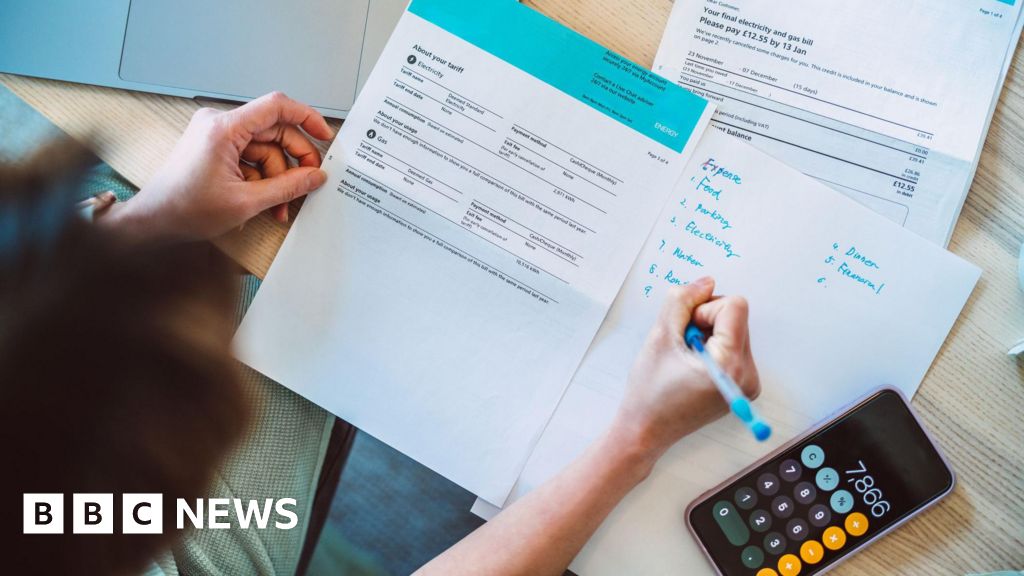 Getty Images
Getty ImagesDomestic energy prices are expected to rise in the run-up to winter, according to consultancy Cornwall Insight.
The forecaster, which is widely regarded for its accurate predictions, said a household using a typical amount of gas and electricity would pay £1,714 a year from October.
That compares with a current annual bill of £1,568, the lowest for two years.
Energy regulator Ofgem will announce the next official quarterly price cap on Friday, with charities concerned about the prospect of prices rising again.
Although the price cap is changed every three months, it is illustrated by Ofgem in terms of an annual bill for a household using a typical amount of gas and electricity.
People in larger properties will tend to pay more overall owing to higher energy usage, and those in smaller properties will pay less.
That is because the cap limits the maximum price that can be charged for each unit of gas and electricity, rather than the total bill.
It affects 28 million households in England, Wales and Scotland. The sector is regulated separately in Northern Ireland.
Cornwall Insight said prices paid by households, although protected to some degree by the price cap, were affected by volatility in the global energy market.
Wholesale prices, paid by suppliers, had risen recently, it said.
With prices set to rise, some billpayers might look at the options available to fix their energy tariff.
Cornwall Insight said that the average saving from the top 10 cheapest tariffs on the market in August was only £5 a year, compared with a default tariff set by the price cap.
That may change in the coming weeks, and Richard Neudegg, from price comparison website Uswitch, said there were options for those who wanted certainty.
“Just because it is a fix, it doesn’t mean it is a good price fix,” he said.
“The question for consumers is, if they want that level of certainty, how cheaply can they get it.”
Uncertainty ahead
Cornwall Insight also said it expected costs to rise again during the winter, when the January price cap is announced.
It said a “modest” rise was anticipated. However, recent tensions in the Russia-Ukraine war could see prices rise further, it added.
“While we don’t expect a return to the extreme prices of recent years, it’s unlikely that bills will return to what was once considered normal. Without significant intervention, this may well be the new normal,” said Craig Lowrey, principal consultant at the forecaster.
Charity National Energy Action said any increases in prices, alongside less support from the government, could stretch some households’ finances “beyond breaking point”.
Standing charges, a fixed daily fee covering the costs of connecting to a supply, currently stand at at 60p a day for electricity and 31p a day for gas, although they vary by region.
Ofgem is currently considering whether to change the standing charge billing system.
Energy bills are considerably lower than the peak after Russia’s invasion of Ukraine, when the government stepped in to limit bill rises, but are much higher than before the pandemic.

How to keep energy use – and bills – down
Experts have shared three tips to keep on top of energy use during the warmer months:
- If your hot water is too hot to wash your hands in, then your setting is too high so turn the boiler down
- Manage your draughts, such as putting a black bag with scrunched up paper up an unused chimney, or limit other draughts around the home
- Limit time in the shower to four minutes. The charity WaterAid has compiled a playlist of four-minute songs to keep you to time


